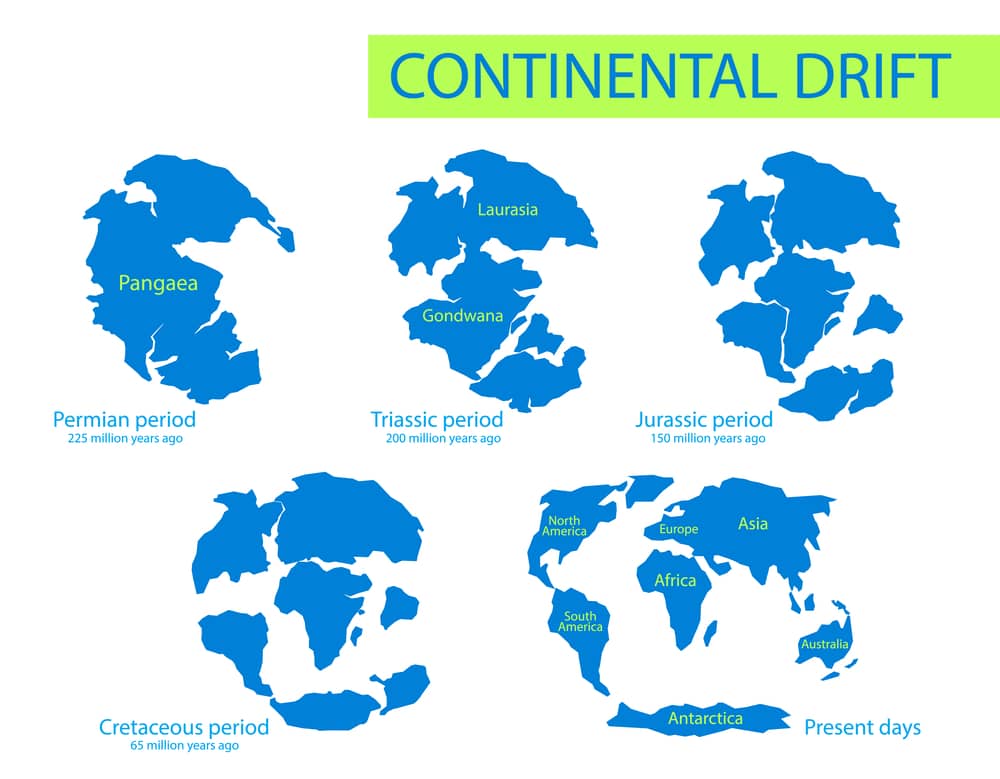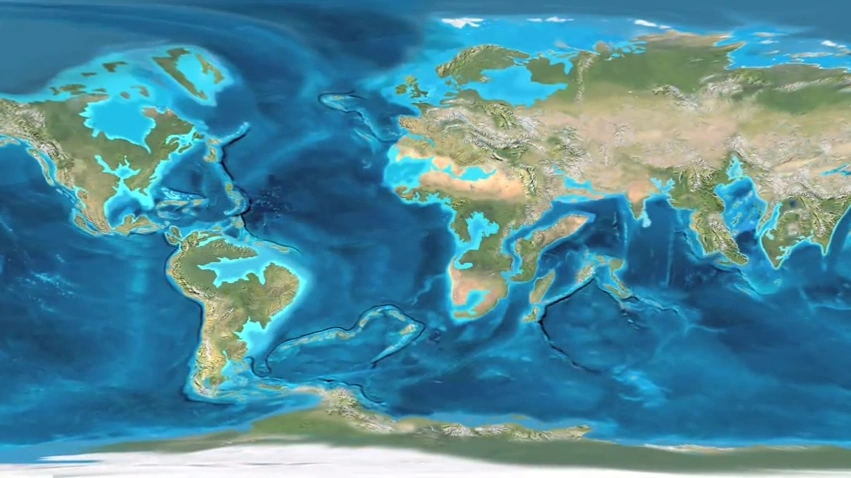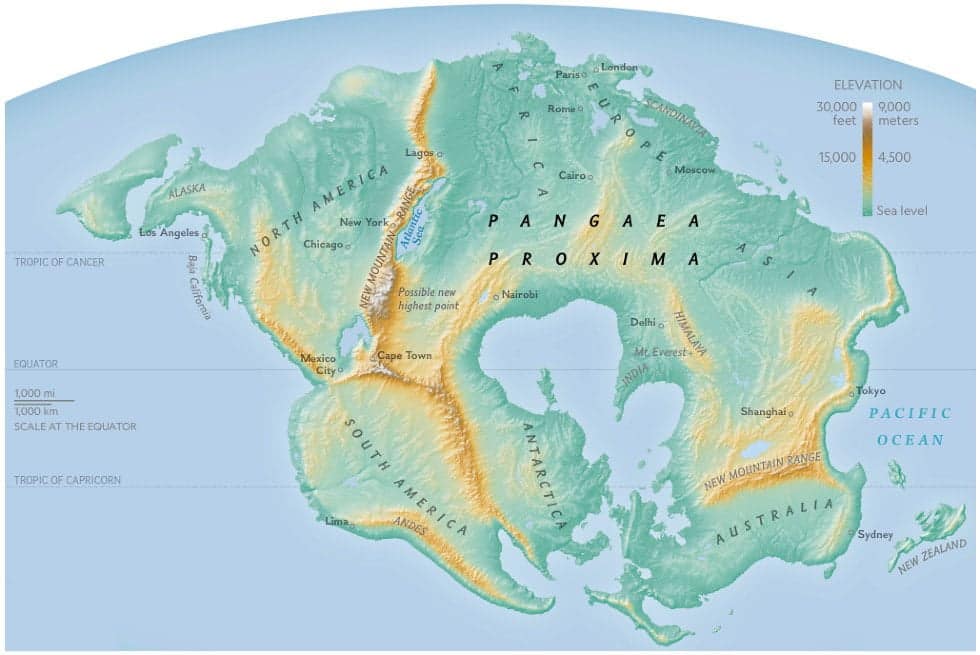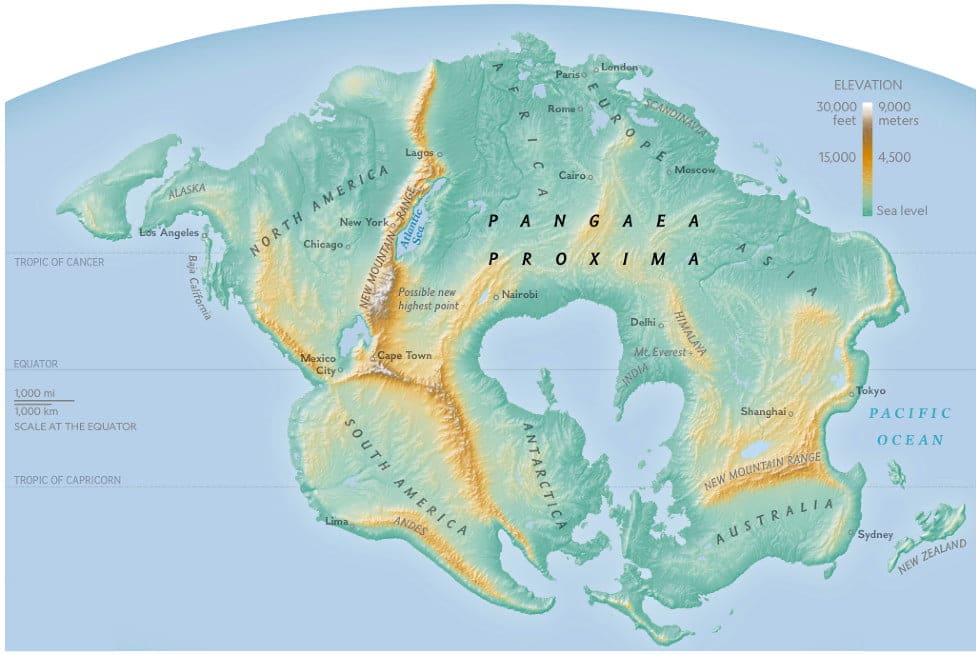For us humans, the shape and position of the oceans and continents seem fixed. But that's only because our lives are so short.
If our existence lasted hundreds of millions of years instead of just a handful of decades, we would see land masses constantly merging and breaking apart again. In an ever-changing map of the world, we would see a dance of the continents fueled by an almost continuous orgy of earthquakes and volcanic eruptions. What will the next pangea be like? Forget physical and political geography: this is pure geology. Here is a map of the continents of the future world. How many and what are they, you will ask me: and I don't know. Certainly not five like now. Give them names if you like.

Pangea 2.0
For at least a couple of times, all the dry fragments of our planet have come together. The result? A single giant island in a single giant sea. A map of the world that does not include the 5 continents, no sir. No, it doesn't even include six. About 200 million years ago, Pangea è was the last iteration of this recurring supercontinent on the world map. That profound history will repeat itself in the future world: in another 250 million years we will have the next supercontinent. We already have the name: Pangea Proxima. For friends: the supercontinent that should be formed from the disintegration of the African and South American continents, changing the map of the world. Did I really say “map”?
Here's what the future world map will look like
The Americas will be attached to Africa to the north and Antarctica to the south; Africa will hit Europe and the Middle East; Australia will be welded to East Asia. The giant continent will sit on the remnants of the Indian Ocean, now an inland sea that will mirror the former Mediterranean. On the map of the future world, India will become a kind of old Italy.
The new highest point in the world will no longer be located in the Himalayas, but in the still unnamed mountain range that will rise at the point where the American states of Florida and Georgia will "crash" into South Africa and Namibia.

No problem for those who will have to rewrite the maps: because there won't be.
There are unlikely to be humans around to witness the reunification of the earthly masses of the future world. No Africa, no America, no Asia, no Europe, no Oceania. No borders. No human beings? We will be lucky to survive in the next century, not to mention the current millennium: but the map of the future world still includes some cities today, like this: to orient ourselves.

Or perhaps I should say “to disorientate”? Don't ask me how many continents there are: I only see a nice big one (with two islets corresponding to Alaska and New Zealand). In Pangea Proxima, Cape Town and Mexico City are only a day's drive away. Lagos is north of New York, and both are close to the Atlantic Sea, the shrunken remnants of the ancient ocean. My Naples will be an inland city. And you could travel from Sydney to Shanghai and then on to Tokyo without having to cross a single body of water. The continents: a memory. Geography: a vast memory exercise.
Europe has attached itself to Africa and Britain (despite Brexit) has returned to Europe. One thing on the future world map has remained almost the same: New Zealand. It's still an island, and it's forever threatening to fall off the bottom right of the future map.


